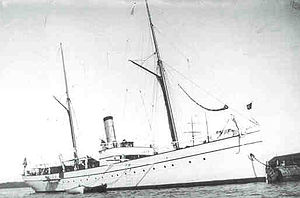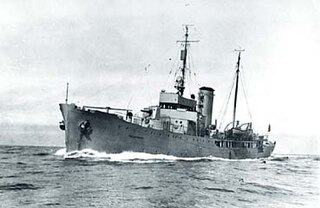
Fridtjof Nansen was the first ship in the Norwegian armed forces to be built specially to perform coast guard and fishery protection duties in the Arctic. She saw service in the Second World War with the Royal Norwegian Navy until she ran aground on an unmarked shallow at Jan Mayen in November 1940.
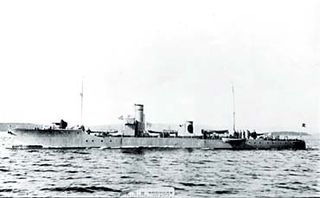
HNoMS Trygg was a torpedo boat of the Royal Norwegian Navy. Her hull was built in Moss and she was finished in Horten, with build number 109. Trygg had two sister ships: HNoMS Snøgg and HNoMS Stegg. Together the three vessels formed the Trygg class of torpedo boats.
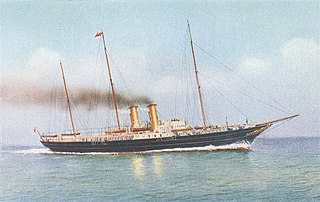
HMY Alexandra was a steamship built as a British royal yacht, completed in 1908. Normally transporting Britain's royal family to European ports, Alexandra served as a hospital ship during the First World War. After 17 years of British service, she was sold to Norwegian commercial interests in 1925. Renamed Prins Olav, she was first used as a luxury cruise ship on trips to the North Cape, she was converted to take more passengers and cargo. In 1937 she began sailing as a Hurtigruten passenger/cargo ship along the coast of Norway. After being requisitioned by the Norwegian government following the 9 April 1940 German invasion of Norway, she transported troops for the Norwegian war effort. Prins Olav was sunk by German bombers on 9 June 1940, while attempting to escape to the United Kingdom as the Norwegian Campaign was coming to an end.

HNoMS Draug was the lead ship of the three-ship Draug class of destroyers built for the Royal Norwegian Navy in the years 1908–1913. The four-stacked destroyer was kept in service long after she was obsolete, and took part in the defence of Norway during the German invasion in 1940.
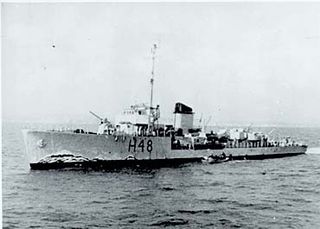
The Sleipner class was a class of six destroyers built for the Royal Norwegian Navy from 1936 until the German invasion in 1940. The design was considered advanced for its time, and it was the first class of vessels for the Norwegian Navy that used aluminium in the construction of the bridge, the mast and the outer funnel. Extra strength special steel was used in the construction of the hull. Unlike the earlier Draug class the Sleipner class had comparatively good capabilities in both main guns, anti-aircraft artillery and anti-submarine weapons. The class was named after Sleipnir, the eight-legged horse of Odin.

HNoMS King Haakon VII was a Royal Norwegian Navy escort ship during World War II, named after King Haakon VII of Norway. She was gifted to the RNoN by the United States on 16 September 1942, in the presence of President Franklin D. Roosevelt and Norwegian Crown Princess Märtha.

HNoMS Æger was a Sleipner-class destroyer launched at Karljohansvern naval shipyard in Horten in 1936. The Sleipner class was part of a Norwegian rearmament scheme started as war became ever more likely in the 1930s. When the Germans invaded Norway on 9 April 1940, Æger intercepted and sank the clandestine German supply ship Roda. She was shortly afterwards attacked and sunk by German bombers, claiming two of the attacking aircraft with her anti-aircraft armament before being taken out of action by a heavy bomb.

HNoMS Sleipner was a destroyer commissioned into the Royal Norwegian Navy in 1936. The lead ship of the Sleipner class, she gained near-legendary status in Norway by enduring over two weeks of intense air attack by Luftwaffe bombers following the 9 April 1940 invasion of Norway. After the resistance in South Norway started unravelling she made her way over the North Sea to continue the fight against the Germans from exile. After serving as a convoy escort along the coast of the United Kingdom, she was decommissioned in 1944. She was recommissioned in 1948 after being converted to a frigate. Along with her surviving sister ships she was sold for scrapping in 1959.

HNoMS Odin was a Sleipner-class destroyer that entered service with the Royal Norwegian Navy in 1939. She and the other Sleipner-class vessels were built as part of a Norwegian rearmament scheme in the last years leading up to the Second World War. In 1940, she had taken part in protecting Norwegian neutrality, before being caught in the German invasion of Norway on 9 April 1940. After fighting the invasion forces at Kristiansand, she was captured and pressed into Kriegsmarine service for the duration of the war. After the end of the war, she was returned to Norway. In 1948, she and her surviving sister ships were converted to frigates and remained in service until sold for scrapping in 1959.

HNoMS Nordkapp was the lead ship of the Nordkapp class of fishery protection vessels. She was launched 18 August 1937 at Horten naval shipyard, with yard number 123. She had one sister ship, HNoMS Senja. Nordkapp was named after the North Cape in Finnmark. As was typical of her class, Nordkapp was very unstable in rough seas and was viewed from the beginning as a second-rate vessel. Nordkapp sailed throughout the Second World War and saw service in several theatres.

HMS Tigris was a T-class submarine of the Royal Navy. She was laid down at Chatham Dockyard and launched in October 1939.

The Trygg class was the third and last class of torpedo boats to be built for the Royal Norwegian Navy. The three Trygg ships were constructed from 1919 to 1921 at Moss Verft in Moss (Trygg) and Horten naval yard.
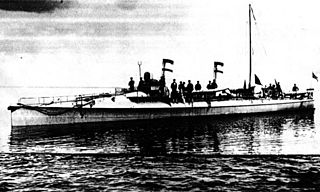
HNoMS Sæl was the penultimate vessel of the ten 1. class torpedo boats of the Royal Norwegian Navy. She was built at the Royal Norwegian Navy Shipyard in Horten in 1901, with yard number 85. She was to see close to 40 years service with the Royal Norwegian Navy, taking part in the preparations for war in connection with the dissolution the union with Sweden in 1905, enforcing Norwegian neutrality during the First World War and opposing the German invasion of Norway in 1940. She was lost in battle with Kriegsmarine vessels at Ånuglo in the Hardangerfjord on 18 April 1940.

HNoMS Honningsvåg was a naval trawler that served throughout the Second World War as a patrol boat in the Royal Norwegian Navy. She was launched at the North Sea harbour of Wesermünde in Hanover, Germany in February 1940 as the fishing trawler Malangen and was captured by Norwegian militiamen at the North Norwegian port of Honningsvåg during her maiden fishing journey to the Barents Sea. Having taken part in the defence of Norway in 1940 she spent the rest of the war years patrolling the ocean off Iceland. She was decommissioned in 1946, sold to a civilian fishing company in 1947 and scrapped in 1973.

SS Dronning Maud was a 1,489 ton steel-hulled steamship built in 1925 by the Norwegian shipyard Fredrikstad Mekaniske Verksted in Fredrikstad. Dronning Maud was ordered by the Trondheim-based company Det Nordenfjeldske Dampskipsselskap for the passenger and freight service Hurtigruten along the coast of Norway. She served this route as the company flagship until she was sunk under controversial circumstances during the 1940 Norwegian Campaign.
HNoMS Tor was a Sleipner-class destroyer of the Royal Norwegian Navy that was launched in September 1939. She was under outfitting and testing when Nazi Germany invaded Norway on 9 April 1940. Although scuttled by Norwegian naval personnel to prevent her from being captured by the invading forces, she was soon salvaged by the Germans and put into service with the Kriegsmarine. Under the name Tiger she served out the war as an escort and training vessel, being recovered by the Norwegians in Denmark after the German capitulation in 1945. After the war she was converted to a frigate and served until 1959.

Operations: Norwegian campaign HNoMS Storm was a 1. class torpedo boat constructed in 1898. Storm served the Royal Norwegian Navy for almost 42 years, including neutrality protection duties during the First World War. She was lost in the 1940 Norwegian campaign of the Second World War. During the Norwegian Campaign, she was the only Norwegian warship that launched a torpedo against the invading Germans.
MTB 345 was an experimental motor torpedo boat constructed in 1941, which saw limited service with the Royal Navy before being transferred to the exiled Royal Norwegian Navy on 16 March 1943. She sailed with the Royal Norwegian Navy for three months in 1943, until captured by German forces on 28 July 1943, during her second mission to the coast of occupied Norway. Two days after their capture, the crew of MTB 345 were executed by the Germans based on Hitler's Commando Order. Following their capture of MTB 345, the Germans pressed the motor torpedo boat into Kriegsmarine service, renaming her SA 12. The fate of SA 12 since December 1943 is unknown.

SS Sirius was a Norwegian iron-hulled steamship built in Germany in 1885. Sirius spent over 55 years sailing with cargo, regular passengers and tourists between Norway and Europe, and on the Norwegian coast. In 1894-1895, she served a year on the Hurtigruten route on the coast of Norway, before reverting to her former duties.
Niels Larsen Bruun was a Norwegian officer who served in the Royal Norwegian Navy for more than four decades. Bruun took part in neutrality protection duties during the First World War, seeing service on several naval vessels and assuming his first command. He continued his service in the inter-war years, teaching at naval schools in addition to shipboard service.
